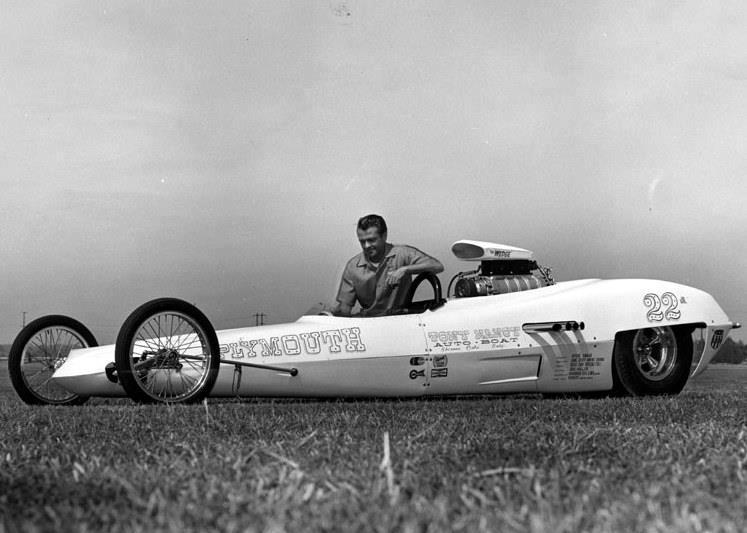These are The 10 Most Devastating Drag Racing Crashes That Changed the Sport Forever!
Drag racing has always lived on the razor-thin line between thrilling speed and unforgiving danger. A quarter-mile stretch can turn into a battlefield of fire, shattered metal, and life-altering consequences in just seconds. Some crashes end careers, some end lives, and some reshape the sport forever.
Throughout drag racing history, the most devastating accidents have forced teams, engineers, and sanctioning bodies to rethink the meaning of safety. Each tragedy brought painful lessons — but also innovations that today save lives.
Below is a powerful look at ten catastrophic crashes that didn’t just shock the world… they changed it.
1. Don “Big Daddy” Garlits – The Explosion That Rewrote Drag Racing (1970)
In 1970 at Lion’s Dragstrip, Don Garlits suffered a horrifying accident when his transmission exploded at the starting line. Shrapnel severed part of his right foot, and the car spiraled violently before stopping in silence.
Instead of retiring, Garlits used his hospital time to design the first successful rear-engine dragster, removing the driver from the most dangerous point of impact.
This single innovation revolutionized Top Fuel design and remains the global standard today.
2. Blaine Johnson – The Heartbreaking Loss That Forced Engine Containment (1996)
On September 1, 1996 at the U.S. Nationals in Indianapolis, rising star Blaine Johnson’s engine exploded at over 300 mph. A piece of debris punctured the rear tires, launching the dragster into the wall with unsurvivable force.
His death led directly to new nitro engine containment systems, preventing flying engine parts from flipping cars or injuring drivers.
3. Scott Kalitta – The Fireball That Changed the Distance of Drag Racing (2008)
During a qualifying pass at Englishtown, Scott Kalitta’s Funny Car exploded at full speed, and his parachutes failed to deploy. The car continued at more than 300 mph, crashing into the sand trap and erupting in flames.
Kalitta’s death pushed the NHRA to shorten the nitro racing distance from 1,320 ft to 1,000 ft, and implement new shutdown-area safety standards still used today.
4. Eric Medlen – The Invisible Killer: Tire Shake (2007)
Medlen’s accident was unlike anything seen before. While testing in Gainesville, violent tire shake whipped his head side-to-side with deadly force. The crash seemed survivable, but the internal injuries were not.
This tragedy led to the Eric Medlen Project, advancing cockpit padding, head protection, and restraint systems across all professional categories.
5. Darrell Russell – The “Shrapnel Storm” at St. Louis (2004)
At over 320 mph, Russell’s engine detonated with unimaginable violence. The car disintegrated, sending carbon fiber, metal, and fire into the cockpit.
The investigation led to stronger chassis materials, better fire systems, and reinforced driver capsules — innovations still protecting racers today.
6. Leslie Lovett – The Photographer Lost at the Starting Line (1981)
NHRA’s longtime photographer, Leslie Lovett, was killed by flying shrapnel during a starting-line explosion. His death forced the sport to adopt strict media-zone rules, expanded barriers, and safer work zones for track staff.
7. Tony Schumacher – The Crash That Proved Safety Works (2000)
In Memphis, Schumacher’s dragster launched into the air when the rear wing failed, sending the car flipping and exploding down the track. Against all odds, he walked away.
The survival of this crash validated the new titanium driver capsule — now known as the Schumacher Capsule — a major milestone in driver safety.
8. Johnny West – Trapped Inside a Rolling Fireball (1988)
A Funny Car explosion in Phoenix turned Johnny West’s machine into a flaming inferno. He was trapped inside until rescue crews reached him, suffering severe burns.
West later became a leading advocate for improved firewear technology, inspiring the multi-layer fireproof suits that drivers wear today.
9. Pat Austin – A Legend Lost to Mechanical Failure (1982)
During a test run at Firebird Raceway, a catastrophic and rare steering failure sent Austin’s car sideways at tremendous speed before it burst into flames.
His death led to tighter pre-race inspections, new steering-redundancy systems, and stricter builder standards — reforms that now prevent similar failures.
10. John Force – The Crash That Rebuilt Funny Car Safety (2007)
In Dallas, John Force’s Funny Car tore apart mid-run, splitting in two at over 250 mph. He survived with crushed limbs and broken bones.
His comeback drove an engineering revolution:
-
redesigned cockpits
-
reinforced composite bodies
-
stronger restraints
-
advanced crash-data research
Today’s Funny Car safety cell is built from the lessons of Force’s wreck.
Final Thoughts: Tragedy Reshaped the Future
Every crash in this list shattered more than just race cars — they shattered assumptions. But each tragedy also pushed drag racing forward, leading to innovations that save lives today. From rear-engine designs to fireproof suits, containment systems, and cockpit reinforcements, safety in drag racing was born from sacrifice.
These ten moments remind us that progress in motorsports often comes from pain — but each advancement ensures that future racers get to walk away from accidents that once would have been fatal.


